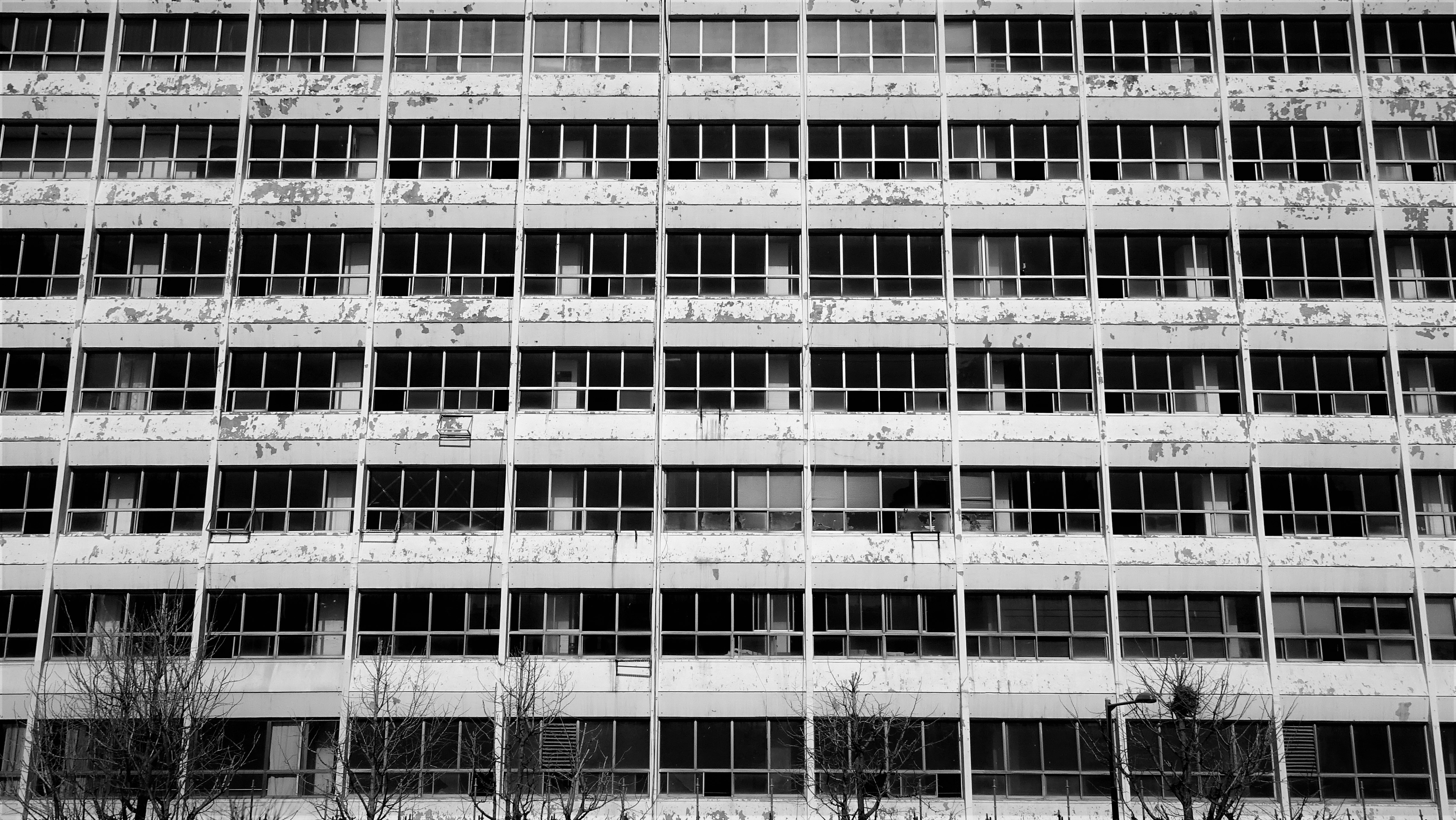The Jeonil Building: Icon of an Uprising
Written and photographed by Isaiah Winters
The Jeonil Building in downtown Gwangju represents many things to many different people. To casual passersby, it’s the paint-chipped eyescraper* that dominates much of the city center. To English-speaking foreigners of a certain vintage, it’s the former home of the Gwangju International Center (GIC), a social capital hub for many in the City of Light. To those with an interest in history, the Jeonil Building is a reminder of the days when local residents dared to take up arms against a military junta, which resulted in nearly 250 rounds being fired into the building from a helicopter-mounted machine gun.
Recently, a few friends and I were able to tour the building and examine firsthand the well-preserved evidence of over 100 of those rounds. Our impromptu tour was arranged by the Gwangju News’ publisher, Dr. Shin Gyonggu, who’s also the executive director of the GIC, as well as professor emeritus at Chonnam National University. Dr. Shin got in touch with representatives of the construction company currently in charge of the Jeonil Building’s renovation, and they quickly approved our visit. During the tour, our guides were remarkably transparent and amiable, granting us total access to the building and answering all of our questions to the best of their knowledge.
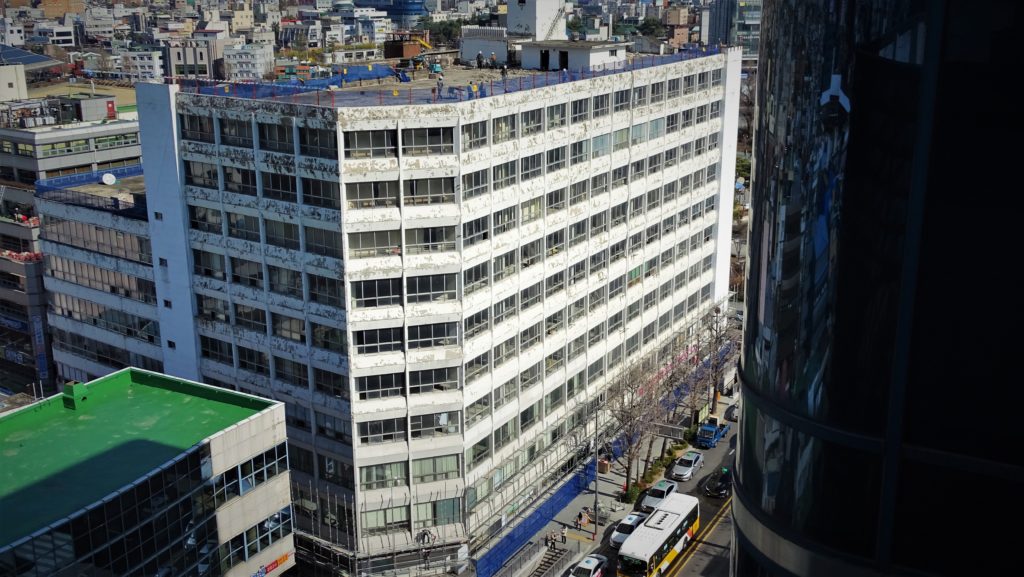
Together we took the building’s 40-year-old elevator straight up to the tenth floor to a long, empty room overlooking Geumnam-ro. At first, much of the room was cordoned off behind red belts, but our guides let us through to get a closer look at the bullet holes. As we approached the window, a scattershot constellation of nicks and holes emerged across the floor. Each had been marked with a number and a neon pink sticker by analysts from Korea’s National Forensic Service, who conducted two investigations of the building, one in late 2016 and another in early 2017. The primary investigation revealed evidence of 185 shots (150 inside, 35 outside), while the secondary investigation yielded evidence of an additional 60 shots (43 inside, 17 outside).
The highest concentration of shots was found in the ceiling of the tenth floor, and even though the shootings took place some 39 years ago, a few of the ceiling tiles still bear the scars of the attack, as well as the clearly discernable trajectory of the volleys: downward from the sky. The high concentration of shots suggests not only that the helicopter had been hovering at the time of the shooting, allowing for more accurate firing, but that this part of the building had been specifically targeted. At the time, the room contained the offices of Jeonil Broadcasting (전일방송), which was then a part of the Jeonnam Ilbo (전남일보), so the shooting seems to have been a reckless threat to any journalists in the building.
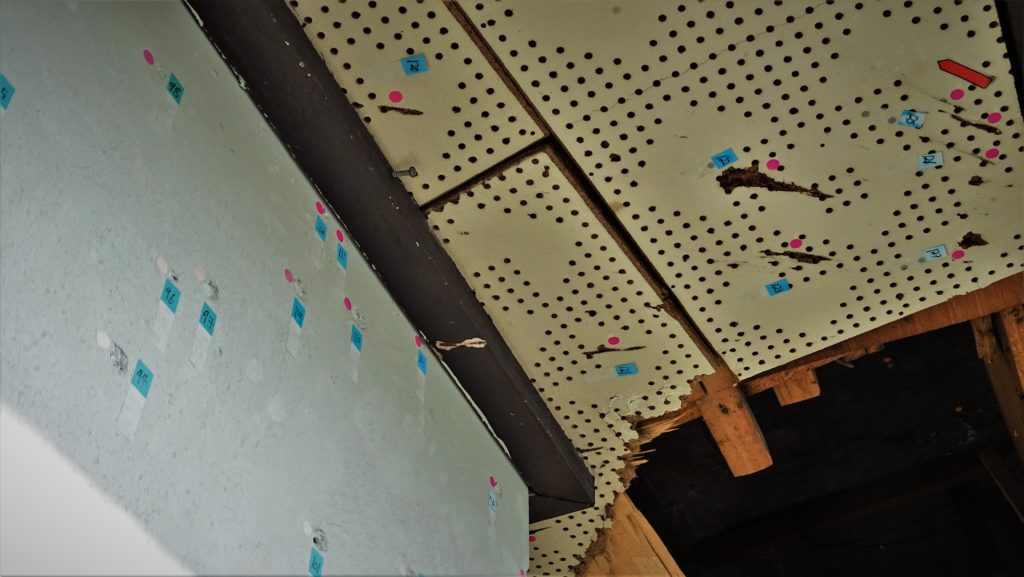
Today, the most staggering visual evidence of the shooting is etched on one of the office’s main columns. On the side facing the window, the concrete column is pockmarked with dozens of bullet holes that cluster near the ceiling. As we looked the evidence over, our guides remarked that it was exactly in this spot by the column where President Moon Jae-in stood and saw for himself the irrefutable evidence of 5.18’s (May 18, 1980) suppression – a fact that some still doubt today.
Chief among those who dispute the veracity of the helicopter attack is none other than Chun Doo-hwan, the 88-year-old former army general who took control of the country in a coup following the 1979 assassination of President Park Chung-hee. Chun, who would go on to rule the country for nearly a decade, is now on trial for libel after allegedly defaming victims of 5.18, including the late pastor Cho Bi-oh, whom Chun called a “masked Satan” and “shameless liar” for claiming to have witnessed the helicopter attack during 5.18. As defamation of the deceased is a punishable offense in South Korea, Chun faces up to two years in jail if found guilty.
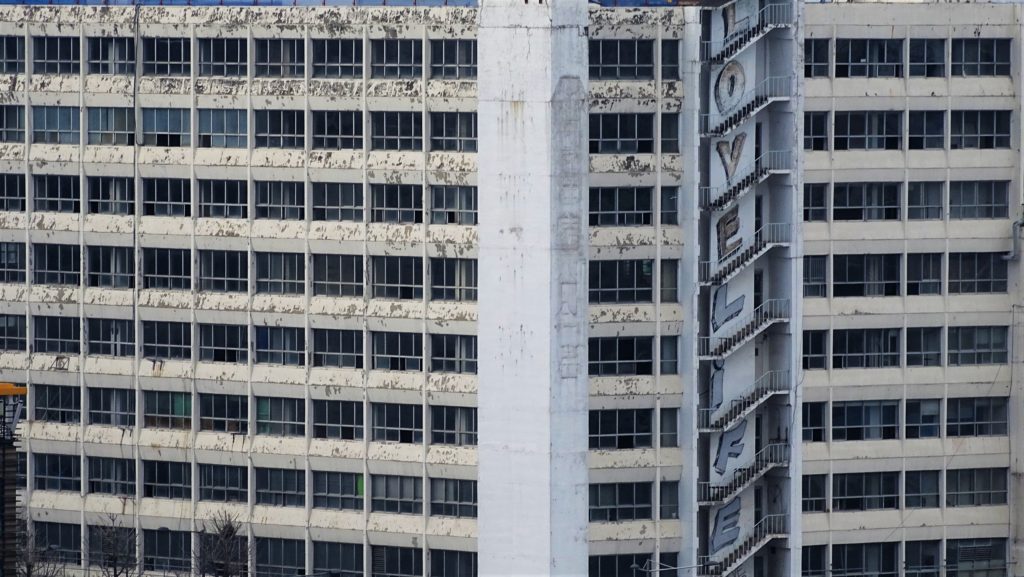
After seeing the old Jeonil Broadcasting room, our party headed up to the rooftop where we enjoyed an impressive view of downtown and peppered our guides with more questions. We asked if we could see what was left of the old GIC down on the fifth floor, and our guides freely obliged. To our surprise, there were still many fragments of old GIC signs lying about, so we wasted no time in getting Dr. Shin to pick one of them up and pose for our cameras. I admit that I’m still quite sentimental about the old GIC, which made the Jeonil Building its home from 2002 to 2013. It’s where I had my first Korean language class and first got involved with hosting the GIC Talk years ago, so I think a little schmaltz is warranted.
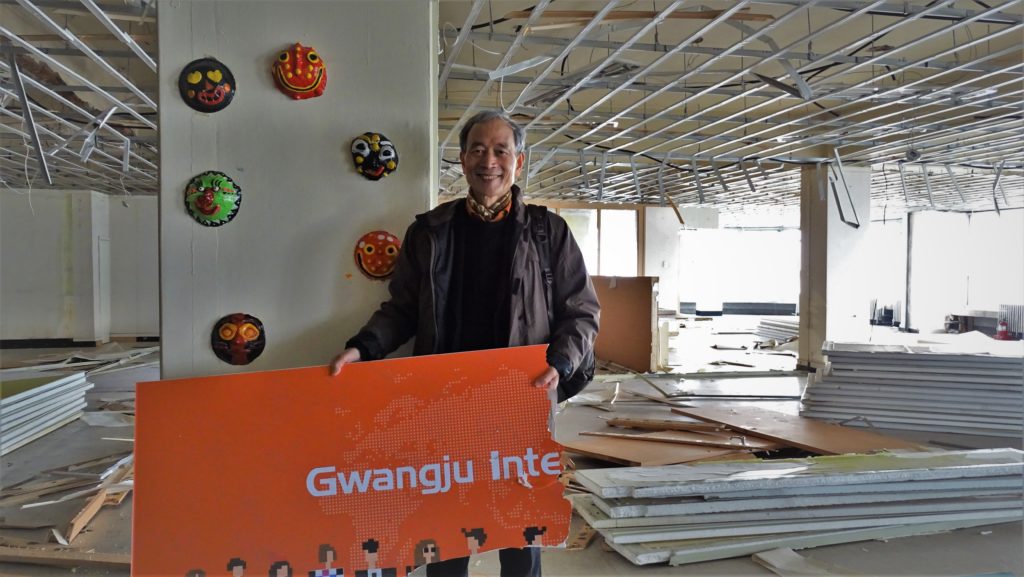
Unfortunately, the Jeonil Building fell into an accelerated state of neglect over time. Despite being centrally located and playing a critical role during 5.18, the number of tenants in the building decreased over the last few decades to the point where it was pretty much abandoned, save for the old GIC, the Korea Exchange Bank, and a stalwart tearoom (Jeonil Dabang, 전일다방) located in the basement. It was as if the management had given up on the place, and so, to prevent further deterioration, the city government took over the building in 2011.
Today, the Jeonil Building is undergoing a metamorphosis that will not only link it to the thriving Asia Culture Center (ACC) across the street, but will also reconnect it to the public, as well as to the city’s future ambitions. The renovation is expected to be completed by spring of next year, just in time for the 40th anniversary of 5.18. The first four floors will be open to the public and will include a digital library, lounge, culture center, and regional tourist center. Floors five to seven will be a space for cultural content companies and future ventures in conjunction with the ACC. The eighth floor will be set aside as a multipurpose hall and sky lounge, while the ninth and tenth floors will be memorial spaces for the distortions, evidence, and truth about 5.18.[1]
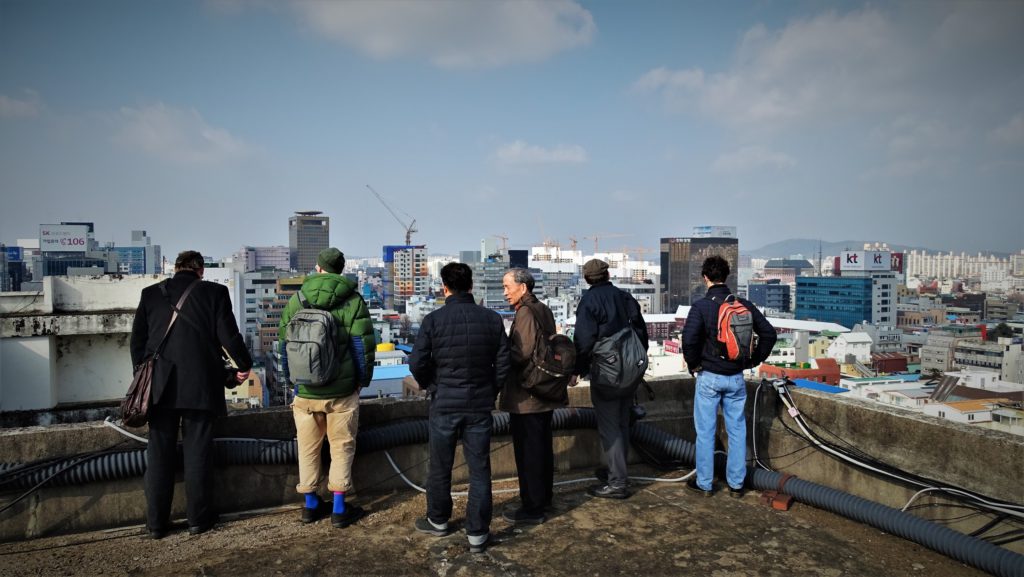
As we worked our way back down to the foyer, I had one more question for our guides about the Jeonil Building. Given that the building will be repainted, I wanted to know what they planned to do with the “LOVE LIFE” graffiti seen along the external stairwell. Although they said they weren’t yet sure what would be done with it, I could tell that the topic piqued their interest because they then turned the tables and asked me if I knew the artist(s) behind the city’s most iconic exhortation. I admitted that I didn’t, but that I still liked the message and wished it could remain. They responded warmly, “We hope so, too.”
Reference
[1] Newsis. (2019, February 17). 5·18 역사 간직한 전일빌딩 시민문화시설로 새 단장. Retrieved from the Jeonnam Ilbo website: https://jnilbo.com/2019/02/17/2019021713000378276/]
The Author
Originally from Southern California, Isaiah is a Gwangju-based urban explorer who enjoys writing about the City of Light’s lesser-known quarters. When he’s not roaming the streets and writing about his experiences, he’s usually working or fulfilling his duties as the Gwangju News’ heavily caffeinated chief proofreader.




